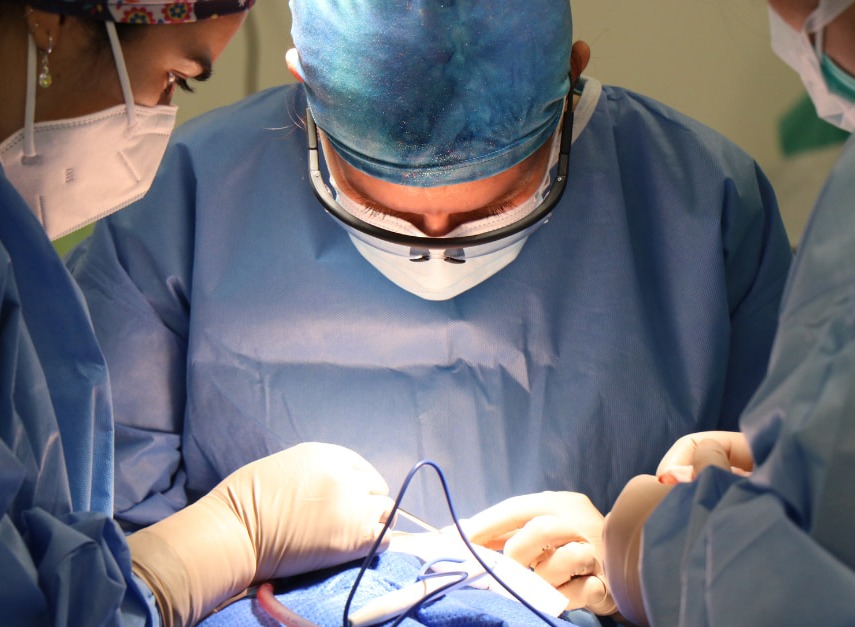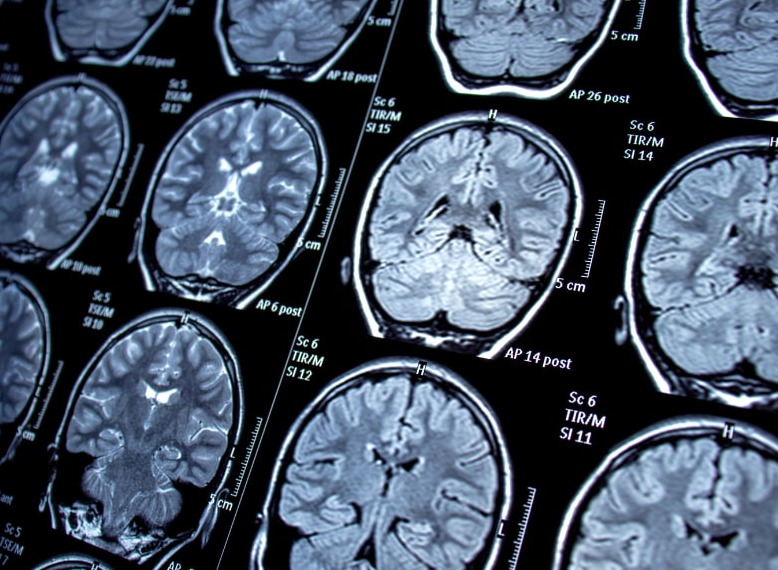Epilepsy surgery: everything there is to know!
Published 12 Feb 2024 • By Claudia Lima
Epilepsy is a common neurological disorder, affecting around 630,000 people in the UK. There are several types of epilepsy. This condition can often be successfully treated with medication. However, for some people who do not respond to drug treatments, surgery has become a promising option for improving their quality of life.
So what is epilepsy? What types of epilepsy surgery are available? Who is it for? What are the risks of epilepsy surgery?
Find all the answers in our article!

What is epilepsy?
Epilepsy is a chronic neurological disorder of the brain that can affect people of any age. It is defined by the spontaneous recurrence of epileptic seizures, which are the result of hyperactivity of a group of neurons in the brain.
An epileptic seizure manifests itself as brief episodes of involuntary shaking which affects either one part of the body (partial seizures) or the whole body (generalised seizures). It can sometimes be accompanied by loss of consciousness, bladder control, bowel movements, etc.
There is no single type of epilepsy, but many different forms, depending on a number of criteria, such as the cause of the disease, the location of the lesion in the brain, the age of the patient at the onset of the disease, and whether it is mild or severe.
Current epilepsy treatments reduce the frequency of seizures. Nevertheless, when epilepsy treatments are not sufficiently effective, or when the patient is resistant to anti-epileptic drugs, surgery can be considered.
Surgery may be one of the treatment options, depending on:
- the frequency and duration of epileptic seizures,
- their impact on the patient's life,
- the existence of a specific epileptogenic focus (cerebral area where recurrent partial seizures occur),
- the fact that at least 2 drugs, at maximum therapeutic doses, do not allow epileptic seizures to be controlled.
How do patients know if they can benefit from epilepsy surgery?
Epilepsy surgery is only suitable for a small number of patients, and requires a pre-operative assessment in a specialised environment, in-depth examinations and time for reflection. The main condition is that the epileptogenic focus must be removable, without the risk of disability associated with the removal of a brain area.
This assessment includes a full range of medical imaging tests, used to analyse how the brain works, a neuropsychological assessment and other tests, such as ophthalmological check-up, speech therapy check-up, and so on. Once the epilepsy assessment has been carried out, the surgeon decides on the surgical technique to be used.
Here are some of the possible imaging tests:
- a cerebral MRI: to visualise the brain lesion,
- an EEG (electroencephalogram) with synchronised video: to record seizures,
- a PET (positron emission tomography) scan: to study the brain activity,
- a SEEG (stereo-electroencephalography): prescribed when the PET scan has not been enough to establish a complete pre-operative assessment. This examination is prescribed to pinpoint the specific area to be operated on.
What are the different types of epilepsy surgery?
There are various epilepsy surgery techniques, which can be tailored to each patient. The aim of the surgery is either curative, to completely eliminate seizures, or palliative, to reduce the frequency and severity of seizures. The surgical procedures used for epilepsy can be invasive, minimally invasive or non-invasive.
The most frequently performed operations are listed below:
Resection and disconnection
Invasive surgery
Different surgical techniques are possible, depending on the location, the underlying lesion and the extent of the epileptogenic zone.
Selective amygdalo-hippocampectomy
Selective amygdalo-hippocampectomy is a surgical procedure (more common and important in adult patients), used to selectively remove the amygdala, hippocampus and parahippocampal gyrus. This procedure aims to eliminate the source of the seizures by specifically targeting the brain regions associated with temporal epilepsy.
Temporal lobe resection
This procedure involves the removal of part of the temporal lobe, the area of the brain often associated with epileptic seizures. It is carried out under anaesthesia using a microsurgical technique.
Extratemporal resection
Resection is extra-temporal when the epileptogenic zone is removed from outside of the temporal lobe. The most common causes of epileptic seizures in this case are brain dysfunctions, such as focal cortical dysplasia, benign tumours or epileptogenic vascular malformations (e.g. cavernomas).
Hemispherectomy or hemispherotomy
This is a radical option reserved for severe cases of epilepsy in children, where part or all of a cerebral hemisphere is removed to control seizures.
Corpus callosotomy
This procedure involves partial or total sectioning of the corpus callosum, the structure that connects the two cerebral hemispheres, in order to prevent the spreading of seizures and reduce their severity.
Multiple subpial transection
This is a procedure in which the surgeon isolates the epileptic focus, destroying the networks of nerve fibres beneath the cortex to prevent the spreading of epileptic activity, by cutting the transmission pathways beneath the protective membrane of the brain.
Minimally invasive surgery
Laser interstitial thermal therapy
This technique involves applying heat to selectively destroy the tissues responsible for epileptic seizures. For this technique to be chosen, the patient's epileptogenic zone must be small and precisely defined.
Stereotactic radiosurgery
This radiosurgery technique involves irradiating the epileptogenic zone by sending precisely focused radiation beams onto a specific brain area. The Gamma Knife allows high precision in the delivery of radiation, limiting damage to surrounding healthy tissue.
Stimulation
If resection and disconnection procedures are not indicated or are not effective, stimulation may be considered as part of palliative care plan. Stimulation involves sending electrical impulses directly or indirectly into the brain via electrodes, to interrupt epileptic brain waves.
Invasive procedures
Vagus nerve stimulation (VNS)
This is a surgical alternative that can reinforce the effect of drug treatment. A battery-powered device implanted under the skin in the collarbone sends electrical impulses to the vagus nerve, modifying the electrical functioning of the neurons involved in the origin or spreading of epileptic seizures. Vagus nerve stimulation also has a positive effect on alertness and mood, and can alleviate depression.
Deep brain stimulation (DBS)
Under general anaesthesia, two thin electrodes are inserted into specific areas of the brain involved in the onset of epileptic seizures. The electrodes are connected to a pulse generator that delivers electrical impulses. This generator is placed in the abdominal or pectoral position, and is linked to the electrodes by connectors and subcutaneous extensions.
Non-invasive procedures
Transcranial magnetic stimulation
It uses magnetic fields, applied to the areas of the skull where seizures occur, to modulate brain activity.
Trigeminal nerve stimulation
This technique involves external electrical stimulation of the trigeminal nerve in the face to influence electrical activity of the brain and reduce seizures.
Conclusion
The choice of a type of epilepsy surgery depends on a number of factors, including the form of epilepsy, the location of the seizures, the patient's response to drugs, and their own preferences regarding their treatment plan. Thorough multidisciplinary assessment by the patient's care team is essential to determine the best surgical approach for each specific case.
Surgery is not always an option for patients who do not respond to drug treatment. And when it is possible, it does not always give 100% positive results. It is therefore important that research into epilepsy continues, in order to develop new therapies. Some research is already showing promising results.
Sources :
Epilepsie : traitements, ameli.fr
Principaux repères sur l'épilepsie, who.int/fr
Epilepsie : symptômes, causes, traitements et prévention, vidal.fr
Chirurgie des épilepsies partielles pharmaco-résistantes de l'adulte, ghu-paris.fr
Troubles convulsifs, msdmanuals.com
Tout savoir sur l'épilepsie, frm.org
Les traitements de l'épilepsie, fondation-epilepsie.fr
La chirurgie de l'épilepsie, neurologies.fr
La neuromodulation par ultrasons, frcneurodon.org
Chirurgie de l'épilepsie adulte, fo-rotschild.fr
Epilepsie, inserm.fr
Neurostimulation dans l'épilepsie, em-consulte.com
Prédiction du devenir fonctionnel post-opératoire de l'adulte épileptique, cairn.info
La stimulation magnétique transcrânienne, dumas.ccsd.cnrs.fr
1 comment
You will also like

Epilepsy medicines pregabalin and gabapentin to be reclassified as class C drugs
24 Oct 2018 • 5 comments

 Facebook
Facebook Twitter
Twitter

